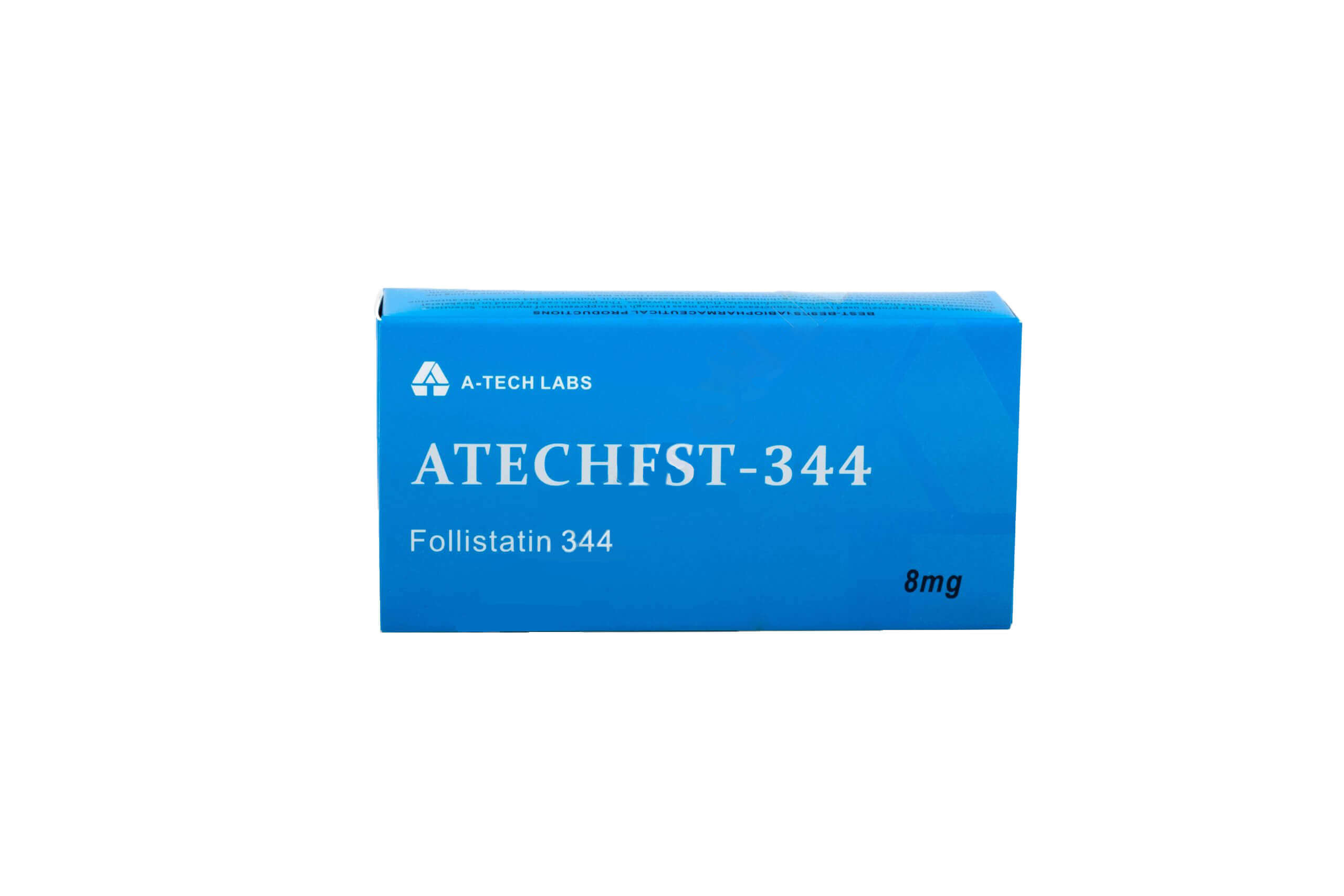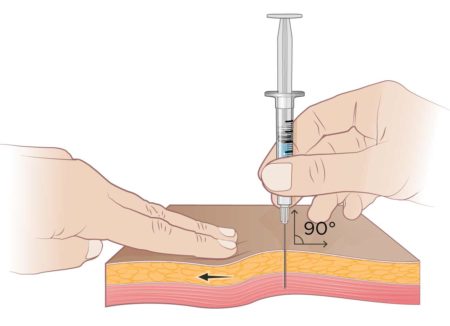Preparing And Injecting Follistatin
Steps To Follow
Being that follistatin is a peptide, it is going to arrive in powdered form – this means that it must be reconstructed using bacteriostatic water.
This is an intricate process that requires a little practice; the most challenging aspect is ensuring that you do not destabilise the peptide powder when introducing the water.
In order to avoid said destabilisation, the water must be introduced slowly into the vial by “drip feeding” it down the side whilst the vial is tilted at a 45-degree angle – you should then let it trickle down and slowly “meet” with the peptide powder, after which it should delicately “melt.”
We’ll now outline the necessary steps to follow in order to reconstitute a peptide like follistatin.
The Reconstitution Process
In order to reconstitute follistatin, you will need:
| 1. A vial of follistatin 344 | 2. A vial of bacteriostatic water | 3. Alcohol wipes | 4. Insulin needles |  |  |  |  |
|---|
With these “ingredients” in place, you have everything you need to proceed with reconstitution.
In order to reconstitute, you should:
● Wipe down both your bacteriostatic water and follistatin vial with an alcohol wipe
● Prepare your needle
● Pierce the vial of water and draw enough to cater for the amount of product contained in the follistatin vial (you’ll need 0.5 ml per mg of peptide powder)
● Now pierce the vial of follistatin, and allow the water to gently run down the side until it naturally meets with the powder and the two synergise perfectly (the powder will simply “melt” into the water)
Once you have successfully carried out this procedure, you must then store it according to our upcoming guidelines.
How To Store Follistatin
How you store your product is largely going to depend on what physical state it is currently in; unreconstituted powder can be stored according to slightly different requirements than reconstituted powder can.
Please observe these guidelines in regards to follistatin storage:
● Unreconstituted peptide should be stored at – 20 degrees and away from direct sunlight, though it can maintain its structure at room temperature for several weeks
● Reconstituted peptide must always be stored at -20 degrees and away from direct sunlight
Should you follow the above principles, your peptide is not likely to diminish in structure.
How To Inject Follistatin
When implementing follistatin, you have the choice between integrating it intramuscularly, or subcutaneously.
Intramuscular Injection
 An intramuscular injection requires the user to inject directly into the muscle cells in order to administrate the product. This injection is always performed at a 90-degree angle. You can find further details and guidelines in regards to this method of injection here.
An intramuscular injection requires the user to inject directly into the muscle cells in order to administrate the product. This injection is always performed at a 90-degree angle. You can find further details and guidelines in regards to this method of injection here.
Subcutaneous Injection
 A subcutaneous injection requires the user to inject directly into the fat layer beneath the surface of the skin. The needle needs to be on a 45-degree slant in order to successfully perform this injection type. For further details on this administration method, please review these details.
A subcutaneous injection requires the user to inject directly into the fat layer beneath the surface of the skin. The needle needs to be on a 45-degree slant in order to successfully perform this injection type. For further details on this administration method, please review these details.
Follistatin Vs ACE-031
Amongst the unique myostatin blocking niche, both follistatin and ACE 031 are often compared to one another owing to their similar properties.
ACE 031 actually serves as a decoy receptor that myostatin “recognises” and binds to – in this case though, the receptor serves no purpose, meaning that myostatin goes to “waste” through binding to a “useless” receptor type.
Theoretically, both products should produce markedly similar results; tests on ACE 031 revealed positive muscle gains in human subjects – not too dissimilar to those encountered so far during follistatin trials.
Unfortunately, what testing did also reveal was that ACE 031 can lead to uninduced bleeding from the gums and nose in conjunction with headaches and injection site irritation. This was enough for research to come to a conclusion, at least for the time being.
This lead to another problem in its own right; much in the same way that follistatin is being sold in a largely irrelevant format by many peptide sites, ACE 031 is being offered in a similar fashion.
This product was a joint venture by the companies Shire and Acceleron – they always were and still are the only manufacturing house that has ever engineered a legitimate version of ACE 031.
In a similar fashion to follistatin, it must be administered by means of a specialised virus.
If we put the proven adverse issues to the side, acquiring one course of treatment would run up to and possibly in excess of $100,000 – as a result, it’s safe to say that anyone claiming to use this item likely isn’t using the “real” version.
Any current results you study outside of official scientific tests are to be treated with utmost skepticism.

